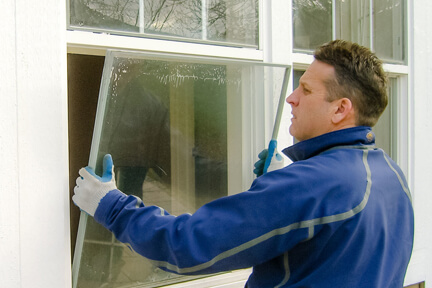Windows are an essential feature of any home, offering natural light, ventilation, and visual connection to the outdoors. However, over time, even the highest-quality windows can suffer from wear and tear due to constant exposure to the elements. Cracks in the sealant, warping frames, or minor glass damage are all early indicators that should not be ignored. Taking a preventative approach to window maintenance helps preserve their function and appearance while avoiding larger, more costly repairs down the road. One of the most important steps in preventative window care is regular inspection. By examining your windows at least twice a year ideally in the spring and fall you can catch minor issues before they become serious. Look for things like condensation between panes, difficulty opening or closing the window, or signs of rot and mold around the frame. Addressing these concerns promptly can prevent structural damage and energy loss, saving both time and money in the long run.

Another preventative measure includes resealing and repainting your window frames. Over time, exposure to moisture, sunlight, and fluctuating temperatures can cause caulking and paint to deteriorate. Resealing helps block air leaks and moisture intrusion, while a fresh coat of paint protects the frame materials from decay. This not only enhances the aesthetic of your home but also strengthens the window’s resistance to the elements. Cleaning your windows thoroughly is another often-overlooked step in their upkeep and try this web-site https://www.wcmanet.org/sustainability-and-eco-friendly-practices-in-wood-window-repair/. Dirt, dust, and pollutants can build up on glass and frames, accelerating deterioration. Using gentle, non-abrasive cleaners and soft cloths can help maintain clarity and prevent scratching. Regular cleaning also gives you the opportunity to notice subtle changes, such as small cracks or loosening hardware that may require attention.
Maintaining the hardware components of your windows is also critical. Hinges, locks, and handles should be lubricated and checked for corrosion or misalignment. If these components fail, it can compromise the overall function and security of your windows. Replacing small parts when needed, rather than ignoring the problem, helps extend the overall lifespan of the unit. Weatherproofing improvements such as adding storm windows, installing weather stripping, or using insulating window film can protect your windows from harsh environmental conditions. These simple additions can significantly reduce thermal transfer and water penetration, especially in older windows that may not meet current efficiency standards. By investing a little effort in preventative repair strategies, you can extend the life of your windows and ensure they remain functional, efficient, and visually appealing for years to come.